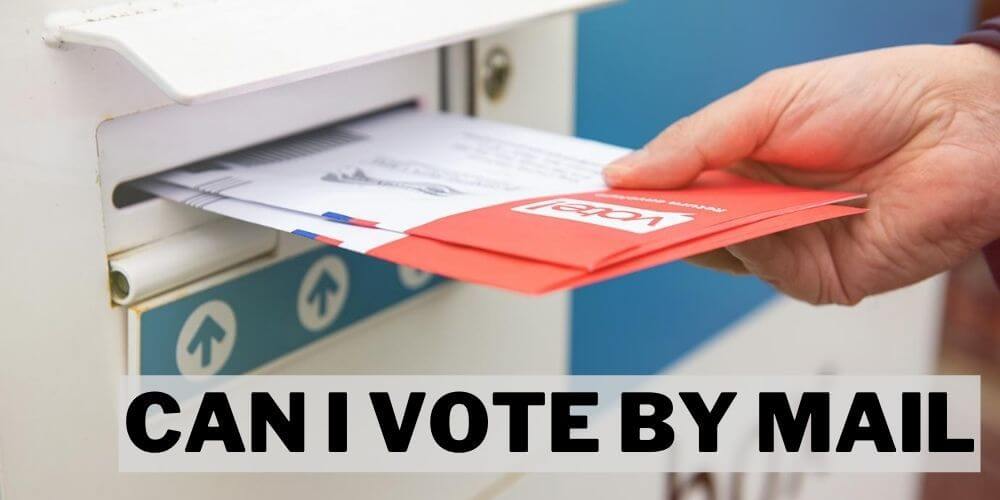Before answering this question, we would like to introduce you to the idea of voting by mail, popularly known as the postal voting system.
When we think of an election, the first image that captures our mind is people visiting the polling station to vote or even through the electronic voting system.
But voting by mail is a much more convenient and uncommon form of voting that requires the ballot papers to be sent or distributed to the electors by post.
Now the question lies as to whether you can vote by mail! Yes, it is indeed possible to vote by mail, but this form of election is available only to a limited number of countries.
In this article, we will be exploring all the different queries you can have about postal votings. So please sit back and enjoy the article as we go through every possible detail.

Contents
What is a vote by mail?
As we already explained, voting by mail involves sending ballots to the electors, and, not to forget, the ballots are returned after voting. They are supposed to be mailed back one day before the day when the election is scheduled.
ADVANTAGES OF USING VOTING BY MAIL.
Postal voting has been introduced in recent years to make voting a convenient process for the people of a country, especially in the middle of a pandemic situation were gathering a crowd of people is dangerous and an irresponsible measure.
While an ongoing pandemic poses a threat to people and their lives, the method of hosting a huge number of people in the polling booth might not be the ideal choice. Yet, the election must take place to ensure the proper functioning of a country.
Down below, we are listing some of the advantages of voting by mail.
- The country adopting postal voting does not need to establish polling booths longer or even pay the polling staff for their job. In this way, the state or country saves millions of dollars that may have been spent on the polling places and their staff.
- The number of people participating in the voting system turns out to be comparatively higher among the higher, poorer, and minority voters.
This allows many people who were not earlier willing to physically go to the polling booth and vote to stay at home and cast their vote at their convenience. In this way, more and more people contribute towards establishing a better government.
- With adapting to voting by mail, there would be no need to establish two different election processes. One is the in-person voting system where you have to visit the polling station, and the other is the postal voting.
The voter rolls are easy to maintain, record, and even verify since they leave paper trails. There isn’t much difficulty faced in the forms of IDs or access for voter intimidation.
- Voting by mail is quite resistant to voter fraud which is the biggest plus point.
- Voting by mail is one of the easiest ways of participating in voting, especially for people with disabilities. They are spared from having to wait in long lines for hours. They can stay at home and easily cast their vote and return the ballot to its specific place without any hassle.
Countries that allow voting by mail.
Some of the countries that allow voting by mail are those listed below. These countries have either adapted to voting by mail or allowed both the former and in-person voting.
Australia:
Federal elections in 1902 introduced the system of voting by mail in Australia. At a federal level, these voters are held by the Commonwealth Electoral Act 1918.
Germany:
Germany is one of the countries where postal voting is quite common. This method of voting has been prevalent since 1957 and is more commonly called the absentee voting system.
As the name suggests, those who, for some reason, cannot vote in person can be at ease since voting by mail is quite a common scenario in Germany.
Indonesia:
The inhabitants of Indonesia who are eligible voters can very conveniently vote in the national elections by voting by mail.
Not only in presidential elections, but they can also even vote in the DPR elections.
Canada:
When you vote by mail, it is considered the vote by special ballot. In Canada, students from home to study abroad find it very convenient to vote by mail. This form of voting is also available for disabled people who are saved from time and effort.
Mexico:
The residents of Mexico also enjoy the availability of voting by mail. Since the year 2006, the natives who for any reason live abroad are permitted the right of postal voting.
Requests must be made to the National Electoral Institute, and then ballots are sent outside the country for people to vote.
Switzerland:
Voting by mail is a common scenario in Switzerland, for the Swiss federal law lets the people of its country vote by mail for both referenda and federal elections.
The residents have both the options of voting by mail and in-person voting by going to the polling stations—about 90% of the voters from Switzerland vote by postal voting.
To sum up our short discussion on postal voting systems, we hope this article covers all your queries in detail. Our main objective is to provide information on whether you can vote by mail has been properly put together.
From explaining the process of voting by mail, laying down its advantages, to summarizing the countries in which this way of voting is common, we hope we laid it all out in this article.
Please do not hesitate to share this article with your friends or acquaintances if you find it useful.